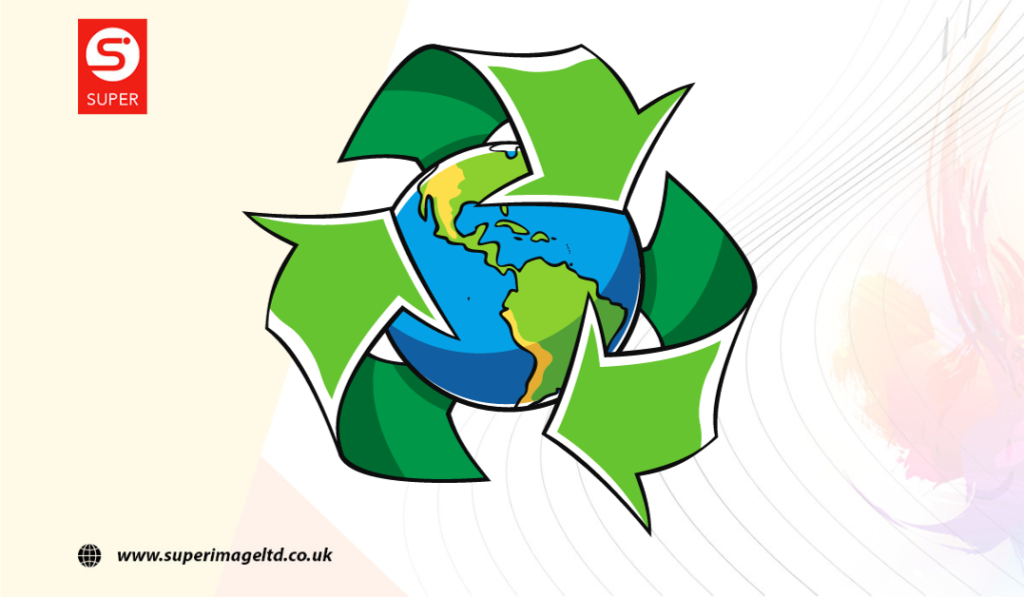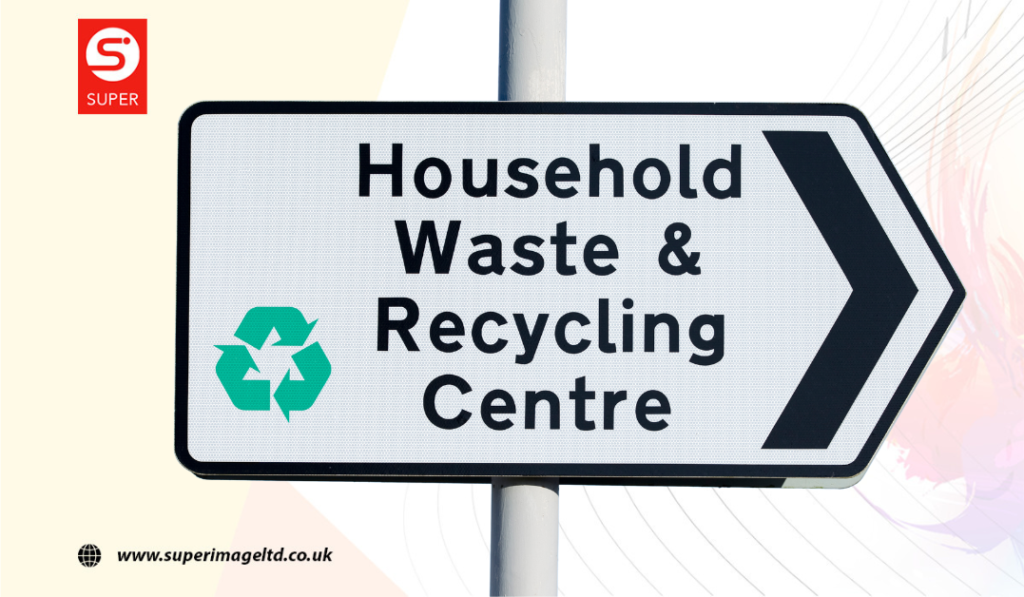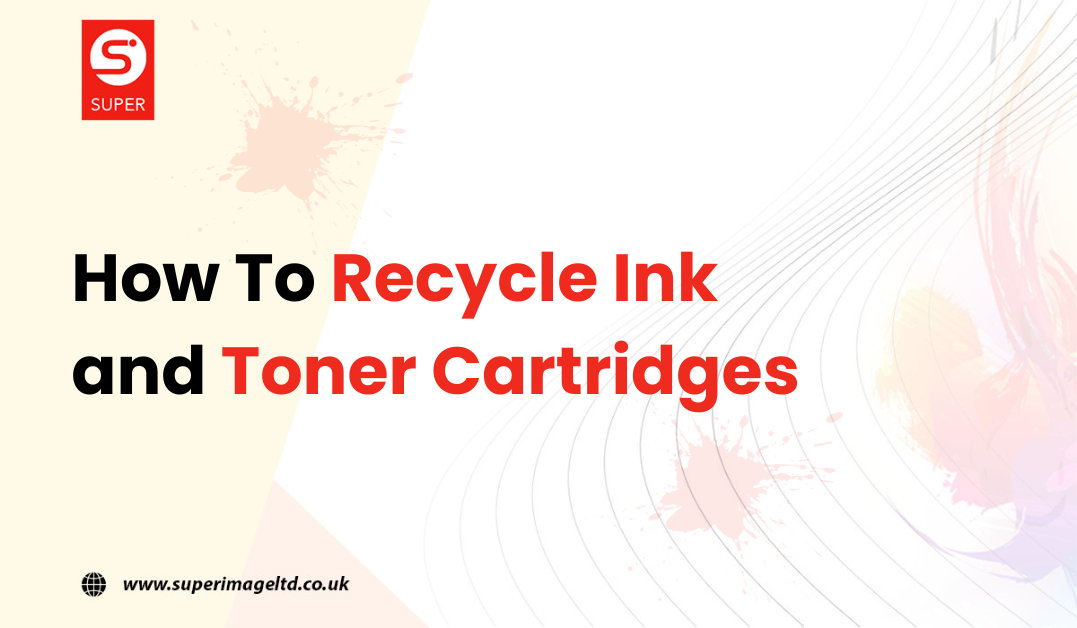With most documents and photos now printed digitally, many of us have a stockpile of depleted inkjet and laser printer cartridges accumulating in our homes and offices.
Rather than consigning these plastic empties to landfill trash, existing sustainability programs make it easy to recycle them.
Various retailers, manufacturers, and recyclers offer cartridge drop-off locations, pre-paid mailers to send them in, and in some cases even buy back certain models to repurpose.
This article will cover how to recycle ink and toner cartridges, detailing the many convenient options for keeping e-waste out of landfills through routine cartridge recycling.
Why Recycling Printer Cartridges Is Important
Responsibly disposing of laser toner cartridges, inkjet cartridges, and other printer consumables keeps tens of millions of plastic e-waste items out of landfills annually. These cartridges contain metals, gases, toner powders, inks, and circuitry that can leach toxins when buried. Recycling also conserves resources by allowing reuse of certain components.
Additionally, many cartridge models still contain usable toner or ink when consumers dispose of them. Refurbishing and remanufacturing spent cartridges utilize this valuable material again. By handling cartridges as ongoing resources rather than waste, recycling greatly benefits the environment.
Facts & Stats About Printer Cartridges Recycling
The scale of printer cartridge consumption and waste makes responsible recycling programs essential. According to sustainability reports:
- Over 375 million inkjet cartridges are discarded annually just in the United States and Canada.
- At 5 lbs each, toner cartridges comprise tens of thousands of tons of plastic and metal waste yearly.
- Less than 20% of toner cartridges enter recycling streams instead of trash bins.
- $200 million worth of reusable components remain in cartridges at the time of disposal.
These statistics indicate vast room for improvement in diverting e-waste. Through public awareness and providing accessible cartridge recycling options, steady progress is being made. Many retailers now offer in-store drop-off, and cartridge manufacturers are expanding prepaid mail-back initiatives. Consumers also have more visibility into buy-back programs exchanging household empties for cash. Together these developments promise a future of less printer waste needlessly destroyed.
How to Recycle Ink And Toner Cartridges

Recycling consumer e-waste like spent printer cartridges requires participation from various industry players. Read on to learn how to easily recycle printer cartridges through the leading avenues:
Manufacturer Lead Programs
HP, Canon, Epson, and Brother operate free recycling programs accepting used cartridges of their brands. Search their website for prepaid mailing labels to return cartridges hassle-free.
Drop-off locations like Best Buy and Staples also recycle printer ink cartridges on their behalf. These cover no-cost recycling needs for most household cartridge models.
Non-Manufacturer Mail-Back Programs

Stamp-paid labels from Clover Imaging Group, LaserCycle, and other recyclers and recycling centers offer a universal mail-back solution for recycling cartridges without brand limitations.
They handle processing multi-brand e-waste and properly separating components in special facilities. This route works seamlessly for handling office waste with diverse printer models.
Office Supply Retailers
Major chains like Office Depot, Staples, and Best Buy provide in-store collection boxes to return spent cartridges of leading brands.
While not a cash exchange, depositing cartridges helps the environment and may qualify you for printable coupons on office or tech supplies as a perk for your eco-friendly efforts.
What To Do With Unused Printer Ink Cartridges
Don’t throw unused printer ink and toner cartridges in the trash when they still hold perfectly usable material. Instead, recycle printer cartridges to give them renewed life. Options vary by manufacturer and component type.
Recycle with SILTD
Our recycling program accepts most leading brands of unused inkjet and toner cartridges by mail. We refurbish and resell viable models, properly dismantling and separating non-working units. This stops functional e-waste from simply being discarded and destroyed.
HP Printer Cartridge Recycling
Consumers and businesses of HP can recycle most original HP inkjet and toner cartridges for free via prepaid labels and store dropoffs through HP’s Planet Partners program.
HP Ink Recycling
Specific HP ink recycling varies by cartridge eligibility. Refer to HP documentation to identify prepaid label requests by credentialed volume accounts or smaller ink recycling packaging options.
HP Toner Recycling
Toner recycling labels and programs are accessible directly through HP for easy return shipment of used toner cartridges. HP issues account credits to companies for qualified toner models.
Canon Cartridge Recycling
Canon offers free recycling for eligible consumer laser and ink printer cartridges. Request UPS on-call pickups or print Canon pre-paid shipping labels according to the cartridge category.
Canon Ink Recycling
Canon provides special ink cartridge mailers to make Canon ink recycling easy and free for end users. Multiple ink cartridges can be bundled in one prepaid bag.
Canon Toner Recycling
Used Canon toner cartridges qualify for complimentary recycling and must follow specific shipment methods either through national carriers or Canon’s pack-and-hold process.
Brother Cartridge Recycling
Customers of Brother in the US and Canada can sign up for free prepaid recycling of Brother branded cartridge types sent directly to their New Jersey recycling center.
Brother Ink Recycling
Emptied Brother ink cartridges are packed securely into their Ink Cartridge Return Program box with a prepaid shipping label for responsible recycling.
Brother Toner Recycling
You can recycle Brother Ink cartridges via the The Brother Toner Return Program which accepts most emptied transfer kits and toner cartridges from Brother printers via included prepaid shipping.
Epson Cartridge Recycling
Although Epson encourages local in-store recycling as the first option, they still enable end users to directly request Epson recycling bags to responsibly dispose of cartridges
Conclusion
Responsibly disposing of the many ink cartridges and laser toner cartridges consumed in homes and offices today requires some direction. Thankfully manufacturers, retailers, recyclers, and sustainability groups provide widespread support systems to avoid throwing these plastic consumables in the trash.
By understanding how to recycle ink and toner cartridges through prepaid mailers, store returns, and buybacks, contributing to environmental welfare becomes second nature.
With more education and initiative from companies and citizens alike, we can envision proper printer cartridge recycling at scale. Consider signing up for an eligible program next time your printers prompt to replace empties.
FAQ’s
Almost all types of ink and toner cartridges can be recycled, including those from well-known brands such as HP, Canon, Epson, and others. However, it is always best to check with the specific recycling program to ensure your cartridge type is accepted.
The limitations on the number of cartridges you can recycle can vary depending on the recycling program. Some programs have a maximum limit, while others encourage recycling in bulk. It is recommended to check with the individual recycling center or program for their specific guidelines
Yes, damaged or expired cartridges can often be recycled. However, the recycling process for these might be different compared to regular cartridges. It is advisable to inquire with the recycling facility to understand the specifics.
To find local recycling centers, you can use online resources such as search engines or apps that list recycling centers in various regions. Additionally, you can check with local governmental environmental agencies for information on recycling centers near you.
Yes, many recycling programs offer incentives or rewards to encourage recycling. These can range from discounts on future purchases, cashback, to reward points in loyalty programs. It is best to research different programs to find one that offers rewards that are beneficial to you.

Hi there, just became aware of your blog through Google, and found that
it is really informative. I am going to watch
out for brussels. I’ll be grateful if you continue this in future.
Many people will be benefited from your writing.
Cheers! Lista escape room
Real great information can be found on web blog.!
Aw, this was an incredibly nice post. Taking the time and actual effort to create a top notch article… but what can I say… I hesitate a whole lot and never manage to get nearly anything done.
Way cool! Some very valid points! I appreciate you writing this write-up and also the rest of the website is very good.
I like it whenever people get together and share views. Great website, continue the good work.
After checking out a number of the articles on your blog, I truly like your way of writing a blog. I saved it to my bookmark site list and will be checking back in the near future. Take a look at my web site as well and tell me what you think.